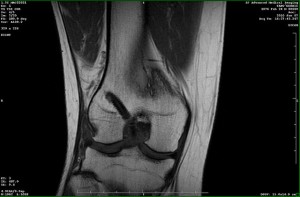
Image courtesy Tobyotter via Flickr
Sleep Apnea and Snoring.
Anthony Burgess, an English writer and composer, summed it up quite clearly in the above quote. Although, it has long been the subject of jokes as well as an annoyance to many a bed partner, loud snoring can be a signal that something is seriously wrong with your breathing during sleep. Snoring is a sign that the airway is not fully open. The distinctive sound comes from efforts to force air within the narrowed passageway of either the upper airway (your nose) or your pharynx (the back of the throat).
An estimated 10-30% of adults snore. It can be seen in both men and women of all sizes and shapes. For most of them, snoring has no serious medical consequences. However, loud habitual snoring can be the first indication of much more serious disorder: obstructive sleep apnea. People with sleep apnea don’t breathe properly during sleep. They don’t get enough air and oxygen, and their sleep is poor as the brain keeps arousing him to a lighter stages of sleep, to allow them to start breathing normally again. This can prevent the deep sleep we need to awakening feeling refreshed. Sleep apnea can lead to daytime sleepiness and can trigger high blood pressure, heart disease, heart attack, and stroke. It can put your at higher risk for diabetes and depression as well.
People with sleep apnea may have trouble concentrating and can become unusually forgetful, irritable, anxious or depressed. They may also complain of insomnia symptoms, morning headaches, as well as sexual dysfunction. Sleep apnea can even be seen in children who may erroneously be labeled slow or lazy in school.
General measures for the treatment of sleep apnea include:
• Normalize weight. Even a weight loss of 10-20% of your body weight may significantly improve the symptoms of obstructive sleep apnea.
• Avoid alcohol and nicotine.
• Avoid certain sleeping pills that suppress breathing at night.
• Consider medications to relieve nasal congestion.
Specific treatments for sleep apnea include:
• Continuous positive airway pressure (CPAP, pronounced SEE-pap). CPAP is the most common form of treatment for obstructive sleep apnea. In this highly effective therapy, a gentle flow of air is delivered through the nostrils to keep the airway open during sleep.
• Oral appliances address sleep apnea by devices that open the airway by bringing the jaw, tongue, and/or soft palate forward. They are best obtained and individually fitted by dentist with specialty training and sleep disorders.
• Surgery may address physical abnormalities that interfere with breathing during sleep, including tonsils or adenoids (this is common in children) and malformations of the jaw or soft palate. Surgical intervention is usually pursued only after an initial trial with CPAP.
• Nasal expiratory resistance valves (a bandaid type adhesive valve replaced nightly over the nostrils) have shown variable efficacy.
• A new pacemaker device is under investigation which stimulates a nerve in the jaw, helping to keep the airway open.
Fortunately, sleep specialists are now able to detect and diagnose nighttime breathing disorders. Proper treatment can not only bring your bedpartner back into your bedroom, it canprevent or reverse the potentially life-threatening consequences of sleep apnea. When treatment is effective, patient sleep more soundly through the night, awaken feeling more refreshed, and experienced less daytime drowsiness. They are also, subsequently, at less risk for associated medical illnesses.
Dr. Tim Grant M.D. – Neurologist and Sleep Specialist
Follow us on Twitter for more! @Miami_Nutrition





